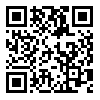1. Al arsis, A., & Sidany, y. (2016). Comparative international human resource management: Future research directions. H.R.M review Humres-00545, 2-4. [
DOI:10.1016/j.hrmr.2016.04.007]
2. Barclay, L. (2016). In sickness and indignity: a philosophical account of the meaning of dignity in healthcare. International journal of nursing studies No.61, 136. [
DOI:10.1016/j.ijnurstu.2016.06.010]
3. Blagaa, P., & Jozsef, B. (2014). Human resources, quality circles and innovation. Procedia Economics and Finance No.15, 1458-1460. [
DOI:10.1016/S2212-5671(14)00611-X]
4. Buttarelli, G. (2015). To ward anewdigital ethics: data, dignity and technology. Europian data protection supervisor .
5. Chadwick, A. (2012). A dignified approach to improving the patient experience: Promoting privacy, dignity and respect through collaborative training. Nurse Education in Practice No.12, 187-191. [
DOI:10.1016/j.nepr.2011.12.006]
6. Clarke , N., & Mahadi, N. (2017). The significance of mutual recognition respect in mediating the relationships between trait emotional intelligence, affective commitment and job satisfaction. Personality and Individual Differences No.115, 129-134. [
DOI:10.1016/j.paid.2016.09.028]
7. Cleaveland, J. N., Byrne, Z., & Cavanage, T. (2015). The future of HR is RH: respect for humanity at work. H.R.M review No.25, 149-151. [
DOI:10.1016/j.hrmr.2015.01.005]
8. Cohen, M. D. (2011). A concept of dignity. Berkelly law Schollarship Repository, 11-16.
9. Crossley , C. (2009). Emotional and behavioral reactions to social undermining: A closer look at perceived offender motives. Organizational Behavior and Human Decision Processes No.109, 21. [
DOI:10.1016/j.obhdp.2008.06.001]
10. Daniels, S. R., Wang, G., Lawong, D., & Ferris, G. R. (2017). Collective assessment of H.R.M field meta analytic needs and theory development prespects for the futher. Human resource management review No.27, 5. [
DOI:10.1016/j.hrmr.2016.09.002]
11. Grassi, L., Costantini, A., Brunetti, S., Marchetti, P., Cruso, R., Saboto, S., & Nanni, M. G. (2016). Dignity and Psychosocial-related Variables in Advanced and Nonadvanced Canserpatient. Journal of Pain and Symptom Management, 3.
12. Hall, j., & Mitchel, m. (2015). Dignity and Respect in Midwifery Education in the UK: A Survey of Lead Midwives of Education. Nurse Education in Practice No.21, 9-11. [
DOI:10.1016/j.nepr.2016.09.003]
13. Hall, J., & Mitchel, M. (2015). Dignity and respect in midwifery education in the UK: A survey of Lead Midwives of Education. Nurse Education in Practice No.21, 9-11. [
DOI:10.1016/j.nepr.2016.09.003]
14. Hesslin, V. L. (2015). An Analyse of the Concept Dignity. Accident and Emergency Nursing No.13, 252-255.
15. Koys, D. (1988). Human Resource Management and a Culture of Respect: Effects on Employees' Organizational Commitment. Employee Responsibilities and Rights Journal, Vol. 1, No. 1, 57-68. [
DOI:10.1007/BF01385453]
16. Liebl, F., & Schwarz, J. (2010). Normality of the Future: Trend Diagnosis for Strategic Foresight. Futures, 313-327. [
DOI:10.1016/j.futures.2009.11.017]
17. Lin, H.-F., Su, J.-Q., & Higgins, A. (2015). How Dynamic Capabilities Affect Adoption of Management Innovations. Journal of Business Research GBR-008472, 5.
18. Marler, j. H., & Fisher, s. L. (2013). An Evidence Based Review of e-HRM and Strategic H.R.M. H.R.M Review No.23, 19. [
DOI:10.1016/j.hrmr.2012.06.002]
19. Matiti, M., & Trorey, G. (2004). Perceptual Adjustment Levels: Patients' Perception of their Dignity in the Hospital Setting. International Journal of Nursing Studies No.41, 736. [
DOI:10.1016/S0020-7489(04)00039-2]
20. Matthews, E. (2016). Respect for Personhood in Medical and Psychiatric Ethics. Ethics, Medicine and Public Health JEMEP-167, 1-9. [
DOI:10.1016/j.jemep.2016.10.007]
21. Perles, G. M., & Martin, A. E. (2017). To Wards a Substantive Knowledge that Promotes the Dignity of the Human Being. Journal of Innovention & Knowledge No.42, 1-7.
22. Rhisiart, M., Störmer, E., & Daheimc, C. (2016). From Foresight to Impact? The 2030 Future of Work Scenarios. Technological Forecasting & Social Change, 1-11. [
DOI:10.1016/j.techfore.2016.11.020]
23. Richter, P., & Bruhl, R. (2016). Shared Service Center Research: A Review of the Past, Present,and Future. European Management Journal, 1-13. [
DOI:10.1016/j.emj.2016.08.004]
24. Roger, K., & Ashforth, B. (2014). Respect in Organizations: Feeling Valued as "We" and "Me". Sage Journal; Journal of management V.43, 1578-1608. [
DOI:10.1177/0149206314557159]
25. Ryan, A., & Wessel, J. (2015). Implications of a Changing Workforce and Workplace for Justice Perceptions and Expectations. H.R.M Review No.498, 14. [
DOI:10.1016/j.hrmr.2015.01.001]
26. Schalk, r., Timmerman, v., & Van den heuvel, s. (2013). How Strategic Considerations Influence Decision Making on e-HRM Applications. H.R.M Review No.23, 85. [
DOI:10.1016/j.hrmr.2012.06.008]
27. Song, A. (2015). Human Diginity: a Fundamental Guiding Valu for Human Rights Approach to Fishiers? Marine Policy No.61, 165-167. [
DOI:10.1016/j.marpol.2015.08.013]
29. Stone, D. l., Deadrick, D. L., Lukaszewski, K. M., Johnson, R., ., & . (2015). The influence of technology on the future of human resource management. H.R.M review 25, 216-231. [
DOI:10.1016/j.hrmr.2015.01.002]
30. Ulrich, d., & Dulebohn, j. (2015). Are we there yet? What's next for HR? H.R.M review No.25 , 188-190. [
DOI:10.1016/j.hrmr.2015.01.004]
31. Van der Heijden, K. (2011). Scenarios: The Art of Strategic Conversation. Chinchester: Jhon Wiley & Sons.
32. Van Gennip, I. E., Pasman, H. R., Vlug, M. G., Willems, D. L., & Philipsen, B. D. (2013). The development of a model of dignity in illness based on qualitative interviews with seriously ill patients. International Journal of Nursing Studies No.50, 1080-1089. [
DOI:10.1016/j.ijnurstu.2012.12.014]









